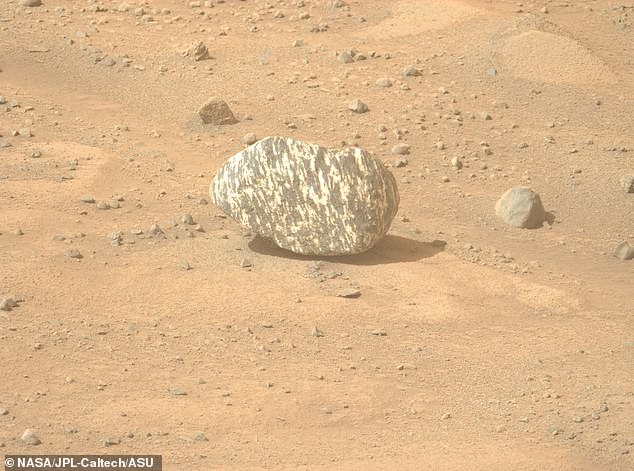Imagine a rover on Mars, tirelessly exploring the red planet’s surface.
Recently, NASA’s Mars Perseverance Rover made a surprising discovery—a peculiar black-and-white striped rock that scientists have whimsically named “Freya Castle.”
This rock is unlike anything previously observed on Mars and stands out boldly against the planet’s reddish-brown backdrop, hinting at thrilling potential discoveries ahead.
The Discovery Process
While traversing what seemed like typical pebbly ground, the rover’s team noticed something unusual in the distance.
NASA scientists described it as having “hints of unusual texture.”
Intrigued, they directed the rover to capture images of this intriguing rock, which were transmitted back to Earth a few days later.
According to NASA, Freya Castle is a loose stone, distinct from the bedrock surrounding it, which suggests that it may have originated from a different location.
Measuring about eight inches across, initial assessments indicate that the stripes on Freya Castle may have formed through igneous or metamorphic processes.
Understanding the Formation
To break it down, igneous processes involve the melting, movement, and cooling of magma and lava.
Magma is the molten rock residing beneath the surface, while lava refers to molten rock that erupts onto the surface.
Mars was once a hotbed of volcanic activity, which could explain how this zebra-like rock came into being.
On the other hand, metamorphic processes involve changes in rock composition due to extreme heat and pressure.
This transformation not only increases rock density but can also lead to the creation of new minerals as minerals rearrange or react with fluids.
The Rover’s Journey
Since February 2021, when Perseverance first touched down in Jezero Crater, it has been climbing a steep slope toward the crater’s rim, on the lookout for ancient rocks that could shed light on Mars’ early history.
The scientists back on Earth were thrilled to spot the zebra rock contrasting sharply with the dusty landscape, indicating that Freya Castle likely rolled down from a higher elevation.
NASA expressed excitement over this potential discovery, hoping that as the rover continues its ascent, it will encounter more of this intriguing rock type, allowing for detailed measurements and analysis.
A Series of Remarkable Finds
Freya Castle is just one of many fascinating rocks discovered recently.
The Perseverance team has reported finding a wider variety of rock types in the crater rim area.
For instance, in June, they observed a striking light-colored boulder near Mount Washburn, and in July, the rover captured images of a leopard-spotted rock that could provide clues about ancient microbial life on Mars.
As Perseverance ascends the crater rim, it’s poised to uncover even more unique geological features that could enhance our understanding of Mars’ complex and ancient history.
